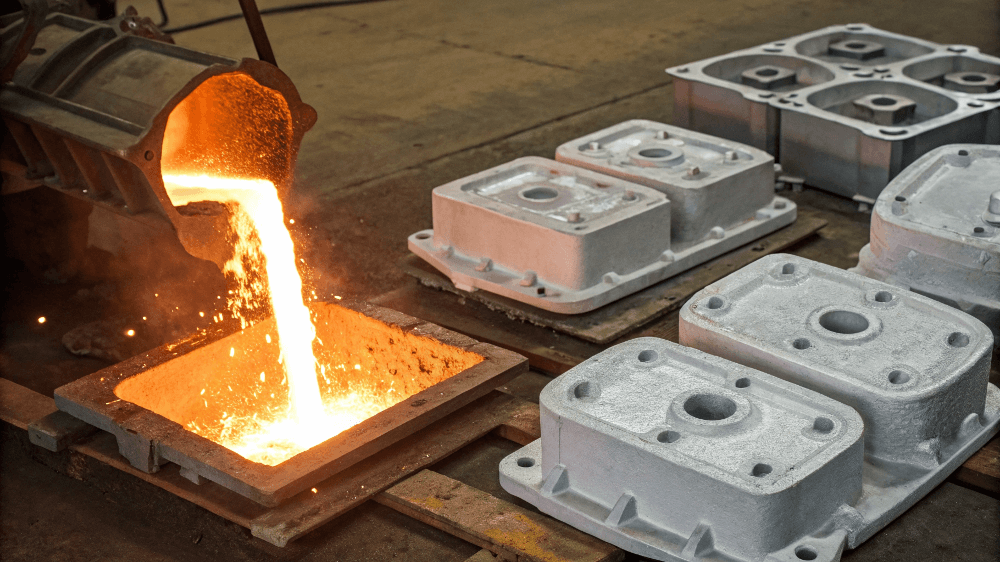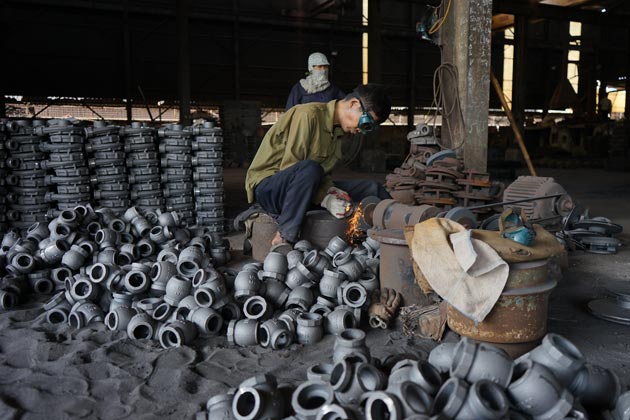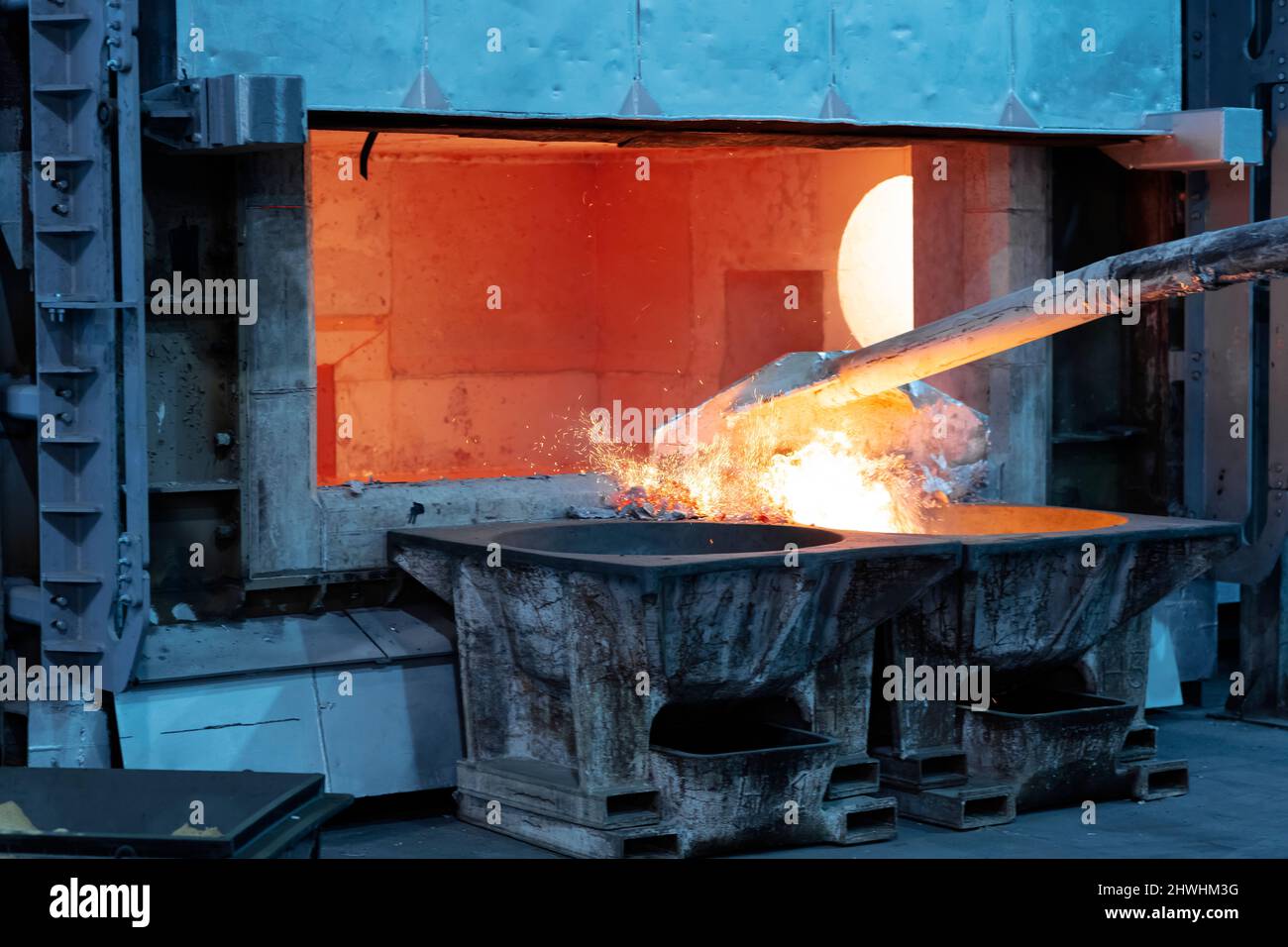A Comprehensive Guide to the Strategies Utilized in Aluminum Foundry Operations
Aluminum Foundry operations utilize different casting techniques, each with unique processes and applications. Understanding these approaches is essential for maximizing manufacturing and achieving desired material properties. From sand casting to die casting, the selections available can considerably affect effectiveness and price. As modern technology developments, so also do these strategies, motivating a more detailed exam of their advantages and constraints. The effects of these advancements require more expedition.
Review of Aluminum Spreading Techniques
Aluminum casting techniques incorporate a range of techniques used to form molten Aluminum right into preferred forms. These strategies are essential in the manufacturing and design industries, offering convenience and effectiveness. Major strategies include pass away casting, which employs high-pressure to infuse Aluminum into mold and mildews for precision components, and gravity casting, where liquified Aluminum is poured right into molds under the impact of gravity, allowing for bigger, less complicated shapes. Financial investment casting, an additional technique, involves creating a wax pattern covered in ceramic, offering high dimensional precision for complex styles. Additionally, permanent mold and mildew casting utilizes multiple-use molds, enhancing manufacturing effectiveness and decreasing waste. Each method accommodates particular applications, stabilizing variables such as cost, manufacturing quantity, and material residential or commercial properties. As sectors develop, innovations in these casting approaches continue to improve the quality and performance of Aluminum parts, positioning them as vital procedures within modern manufacturing.
Sand Casting: Process and Applications
Sand casting is an extensively made use of method in the Foundry sector, known for its simpleness and adaptability. Aluminum Foundry. This process includes producing a mold and mildew from a combination of sand and a bonding representative, generally clay. The mold and mildew is developed around a pattern, which is a reproduction of the wanted last item. As soon as the mold and mildew is ready, molten Aluminum is poured into the tooth cavity, enabling it to strengthen right into the wanted shape
One of the primary advantages of sand casting is its capability to generate complex geometries and large elements, making it ideal for different applications, consisting of automotive components, equipment parts, and attractive things. In addition, sand spreading can suit various Aluminum alloys, improving its convenience. The procedure is cost-efficient for low to medium manufacturing runs, as it does not need costly tooling. Generally, sand spreading stays an essential method in Aluminum Foundry operations due to its effectiveness in conference varied production demands.
Pass Away Spreading: Benefits and Limitations
While die spreading is often contrasted to sand casting, it provides distinctive benefits and limitations that make it ideal for certain applications in the Aluminum Foundry industry. One substantial benefit of die spreading is its capacity to generate complicated shapes with high dimensional accuracy and outstanding surface area coating. This process is specifically helpful for mass production, as it allows for faster cycle times and minimized labor costs. In addition, die casting decreases material waste, boosting general performance.
Nevertheless, die spreading also has restrictions. The first tooling costs are reasonably high, making it less practical for small production runs. The process is finest matched for metals with reduced melting points, which can limit product options. Pass away spreading is likewise limited relating to the maximum size of the parts generated, as larger parts may require alternative techniques. Stabilizing these factors is necessary for determining the suitable application of die spreading in the Aluminum Foundry field.
Investment Casting: Precision and Detail
Investment spreading is a very exact manufacturing process that enables complex designs and fine details in Aluminum elements. This method supplies substantial advantages, including improved dimensional accuracy and reduced machining requirements. Its applications cover different markets, highlighting its adaptability and performance in generating intricate components.
Refine Introduction
The financial investment spreading procedure is renowned for its capability to create complex forms and high-precision parts. This approach starts with producing a wax pattern, which is then coated with a ceramic shell. As soon as the covering solidifies, the wax is melted away, leaving an exact tooth cavity for the molten metal. The Aluminum is put right into this tooth cavity, catching the fine information of the initial pattern. After cooling down, the ceramic shell is escaped, disclosing the cast component. Any kind of necessary ending up work, such as machining or surface therapy, is executed to accomplish the preferred specifications. This procedure is especially beneficial for complex geometries that are hard to attain with traditional spreading methods, guaranteeing both quality and precision in the end product.
Benefits of Precision
Accuracy in investment spreading uses significant benefits, making it a preferred selection for producing complex elements. This technique makes it possible for the production of detailed shapes with limited tolerances, lowering the requirement for extensive machining and lessening material waste. The capability to achieve high dimensional precision translates to a premium fit and surface, enhancing the general quality of the end product. In addition, investment spreading allows for the unification of great details, which is important for parts needing detailed styles. The procedure likewise sustains making use of numerous Aluminum alloys, further increasing its applicability. Generally, the accuracy used by investment casting not just enhances the aesthetic and useful features of elements yet likewise adds to improved effectiveness in production cycles.
Applications in Sector
While numerous manufacturing procedures exist, investment casting stands out for its versatility across different markets, especially in fields requiring high accuracy and detailed components. This casting method is commonly used in aerospace, auto, and medical fields, where tight tolerances and intricate designs are vital. Aerospace elements benefit from investment casting's capacity to generate complicated geometries that lower weight without giving up architectural stability. Likewise, the automobile industry employs this strategy to make engine components that need toughness and precision. In the medical field, financial investment spreading allows the production of medical tools and implants that have to meet stringent quality criteria. On the whole, financial investment spreading greatly boosts product performance and reliability, making it a very useful method in modern manufacturing applications.
Contrast of Casting Methods
 The contrast of casting methods discloses unique benefits and applications across various techniques - Aluminum Foundry. Sand casting is usually celebrated for its flexibility and cost-effectiveness, while die casting is identified for its performance and accuracy in creating high quantities. Financial investment casting, look at here previously talked about, showcases its one-of-a-kind ability to produce detailed designs, even more stressing the varied capabilities of each technique in Aluminum Foundry procedures
The contrast of casting methods discloses unique benefits and applications across various techniques - Aluminum Foundry. Sand casting is usually celebrated for its flexibility and cost-effectiveness, while die casting is identified for its performance and accuracy in creating high quantities. Financial investment casting, look at here previously talked about, showcases its one-of-a-kind ability to produce detailed designs, even more stressing the varied capabilities of each technique in Aluminum Foundry proceduresSand Spreading Advantages
Sand casting provides a number of benefits when contrasted to various other casting methods, making it a favored option in numerous manufacturing applications. One of the main advantages is its affordable, as the materials called for, such as sand and steel, are easily offered and affordable. Furthermore, sand spreading permits higher layout flexibility, allowing the production of complicated forms and large elements that might be challenging to achieve with other methods. The process likewise fits a variety of steel alloys, consisting of Aluminum, improving its convenience. Moreover, sand molds can be easily repaired or modified for succeeding casts, making it reliable for both large and small production runs. Overall, these benefits add to sand casting's popularity in the Foundry industry.
Pass Away Casting Techniques
Die spreading methods stand apart as a highly reliable approach for creating metal components, especially when compared to traditional spreading techniques like sand spreading. This procedure involves compeling liquified Aluminum into a mold and mildew under high stress, leading to precise measurements and a smooth surface coating. Unlike sand casting, which requires substantial finishing job, die casting minimizes post-production handling, enhancing total efficiency. Additionally, pass away casting can suit complicated geometries, allowing for detailed styles that would be testing to attain through other approaches. The speed of manufacturing is an additional advantage; die casting can produce big quantities of parts in a much shorter duration. On the whole, the combination of precision, efficiency, and layout adaptability makes pass away casting a preferred option in modern-day Aluminum Foundry operations.
Investment Casting Applications
Investment casting, usually described as lost-wax casting, provides unique benefits over other casting techniques, especially relative to accuracy and surface area coating. This method permits for the production of detailed forms and great information that are tough to attain with sand or pass away spreading. Furthermore, financial investment spreading creates elements with remarkable dimensional accuracy, minimizing the requirement for their explanation substantial machining. Its adaptability makes it appropriate for different markets, including aerospace, automobile, and medical gadgets, where top notch parts are essential. Compared to pass away spreading, which can be restricted by mold and mildew intricacy, financial investment spreading masters creating complicated geometries without jeopardizing structural stability. Subsequently, the selection of investment casting comes to be significantly positive for applications demanding high performance and integrity.
Quality Assurance in Aluminum Foundry Operations
Just how can Aluminum factories guarantee the highest top quality in their products? Implementing extensive high quality control measures is crucial. Shops normally begin by developing clear specs for the Aluminum alloys made use of, ensuring they fulfill market standards. Continual tracking during the melting and pouring procedures helps recognize any type of inconsistencies from wanted chemical structures.
Additionally, aesthetic assessments and non-destructive testing techniques, such as ultrasonic or X-ray examinations, are frequently used to discover inner defects or variances in spreadings. Additionally, statistical process control methods track manufacturing information, enabling early identification of prospective concerns.
Regular training and accreditation of employees in quality control methods are crucial for keeping high standards. Finally, executing comments loopholes from consumers can help factories improve their procedures and enhance product high quality. By adhering to these techniques, Aluminum shops can continually supply high-quality products that meet or exceed consumer assumptions.
Future Patterns in Aluminum Spreading Modern Technology
Innovations in Aluminum spreading modern technology are positioned to improve the sector landscape, structure upon well established high quality control methods. Innovations such as additive production and wise Foundry solutions are arising, making it possible for improved style flexibility and lowered waste. The assimilation of expert system and artificial intelligence in procedure monitoring permits real-time changes, boosting performance and product quality.
Sustainability stays a crucial focus, with an emphasis on recycling scrap Aluminum and reducing power consumption. Advanced alloy solutions are being established to optimize efficiency while reducing ecological effect. The adoption of automated systems, consisting of robotics for putting and dealing with, assures to improve workplace security and precision.
Electronic twins are obtaining traction, permitting for virtual simulations that assist in better decision-making and anticipating maintenance. As these patterns evolve, they will likely produce an extra effective, lasting, and technically advanced Aluminum casting market, establishing new criteria for high quality and efficiency.
Frequently Asked Inquiries
What Safety Procedures Should Be Taken in Aluminum Foundry Operations?
In Aluminum Foundry operations, vital precaution include individual protective tools, appropriate air flow, normal training, risk analyses, emergency situation preparedness, and adherence to methods to reduce dangers related to liquified metal and heavy machinery.
How Is Recycled Aluminum Utilized in Foundry Processes?
Recycled Aluminum is frequently made use of in Foundry procedures to lower environmental impact and manufacturing costs. It undergoes melting and refining, allowing producers to produce top notch items while preserving power and decreasing waste in the Aluminum lifecycle.
What Tools Is Essential for Aluminum Casting?
Essential equipment for Aluminum casting consists of heaters for melting, mold and mildews for shaping, putting ladles, cooling down systems, and ending up devices. Each element plays an useful source essential duty in ensuring the performance and top quality of the spreading procedure.
Exactly How Do Environmental Regulations Influence Aluminum Foundries?
Ecological laws considerably affect Aluminum factories by imposing limits on emissions and waste management. Conformity needs investment in cleaner innovations, which can enhance operational prices yet eventually promotes sustainability and reduces the environmental impact of the industry.

What Prevail Flaws in Aluminum Castings and Their Solutions?
Typical flaws in Aluminum castings include shrinking, porosity, and surface imperfections. Solutions entail enhancing thaw high quality, regulating air conditioning prices, and utilizing correct mold layout, ensuring much better honesty and performance of the last cast items.
 Significant strategies include die spreading, which uses high-pressure to infuse Aluminum into molds for precision parts, and gravity spreading, where liquified Aluminum is poured into molds under the influence of gravity, enabling for bigger, much less intricate shapes. While die casting is typically contrasted to sand spreading, it supplies distinct advantages and limitations that make it appropriate for certain applications in the Aluminum Foundry sector. Sand spreading is usually celebrated for its flexibility and cost-effectiveness, while die casting is recognized for its efficiency and precision in creating high quantities. Pass away casting methods stand out as an extremely reliable approach for generating steel components, specifically when contrasted to standard spreading techniques like sand spreading. Contrasted to pass away spreading, which can be restricted by mold complexity, financial investment casting stands out in producing complex geometries without compromising architectural honesty.
Significant strategies include die spreading, which uses high-pressure to infuse Aluminum into molds for precision parts, and gravity spreading, where liquified Aluminum is poured into molds under the influence of gravity, enabling for bigger, much less intricate shapes. While die casting is typically contrasted to sand spreading, it supplies distinct advantages and limitations that make it appropriate for certain applications in the Aluminum Foundry sector. Sand spreading is usually celebrated for its flexibility and cost-effectiveness, while die casting is recognized for its efficiency and precision in creating high quantities. Pass away casting methods stand out as an extremely reliable approach for generating steel components, specifically when contrasted to standard spreading techniques like sand spreading. Contrasted to pass away spreading, which can be restricted by mold complexity, financial investment casting stands out in producing complex geometries without compromising architectural honesty.